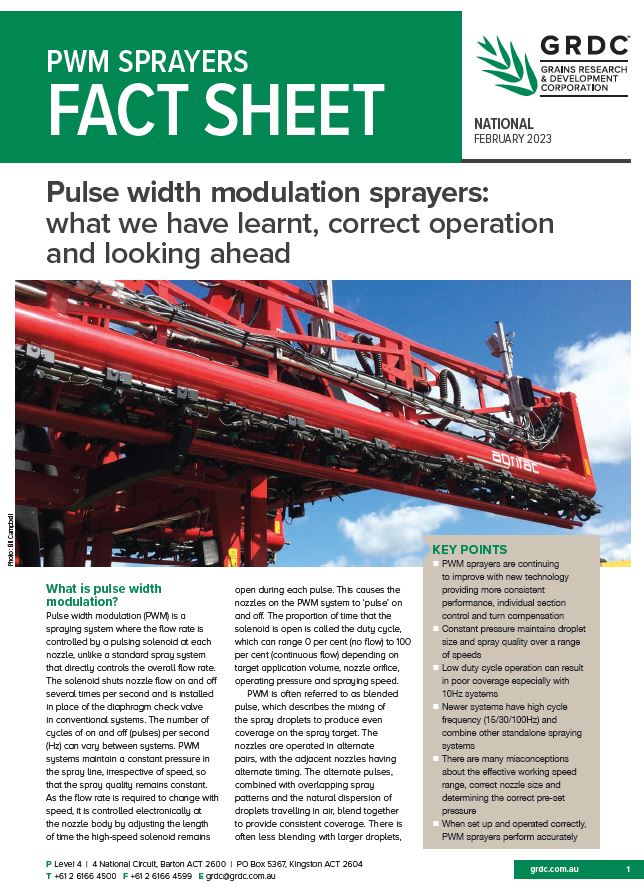Pulse width modulation (PWM) sprayers
Pulse width modulation (PWM) sprayers
Published: 2 Mar 2023
PWM sprayers use rapid on-off pulsing to control liquid flow. They help maintain droplet size and pressure for a precise, efficient job, even as speed or flow rates change.
Key points
- Pulse width modulation (PWM) sprayers continue to improve with new technology.
- They provide more consistent performance, individual section control and turn compensation.
- Available sprayers run at 10Hz, 15Hz, 30Hz or 100Hz cycle frequencies.
- Duty cycle frequency is the speed per second each nozzle pulses. It is set by the regulating solenoid on each nozzle.
- Nozzle size can impact coverage when the sprayer slows down and operates at low duty cycles.
The GRDC standard nozzle selection guides, help select the best nozzle for the task.
Want a hard copy?
GRDC produces a range of publications to share the RD&E knowledge generated from our investments with grain growers and the broader industry.
Printed publications
Printed copies of some publications are available for growers, advisers and farming systems groups, for personal use and distribution at GRDC events.
Contact GroundCover Direct on 1800 11 00 44 or email ground-cover-direct@canprint.com.au to request copies. Publications are free but postage and handling costs may apply.
Download PDF
Region: National
GRDC Project Code: BCC1910-001SAX,

